In the Sacred Valley, community-based tourism isn’t just about visiting; it’s about connecting. Travelers get to roll up their sleeves and engage in the time-honored tradition of Pachamanca, where they learn not just how to prepare a meal, but also the rich stories behind it. This ancient cooking method brings people together, honoring Pachamama while celebrating local culture. It’s an experience that goes beyond the typical tourist path, inviting participants to explore the deep-rooted customs and vibrant community. But what might they discover about themselves along the way?
Key Points
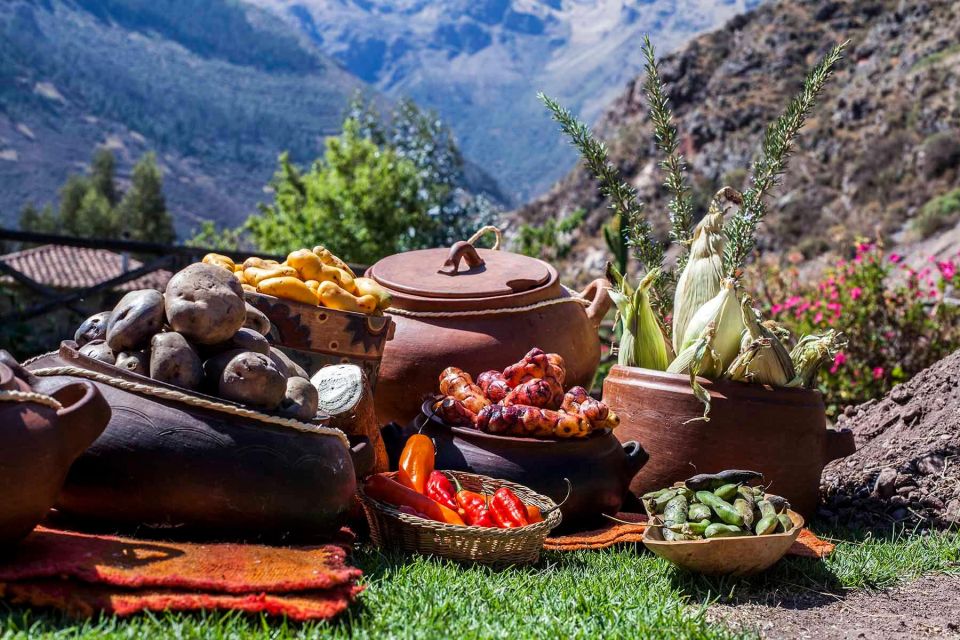
- Community-based tourism in the Sacred Valley fosters cultural engagement through hands-on activities like preparing the traditional Pachamanca meal.
- Pachamanca cooking emphasizes the connection between Andean communities and their land, celebrating local ingredients and agricultural practices.
- Participants enjoy a warm welcome, learn about agricultural tools, and experience traditional textile demonstrations during their visit.
- Convenient pickup from local districts ensures an immersive experience, enriched by knowledgeable drivers sharing cultural insights.
- Essential preparations include bringing cash for tips and local purchases, as well as biodegradable sunscreen to protect the environment.
It's also worth checking out some other tours and experiences nearby.
Overview of Community-Based Tourism
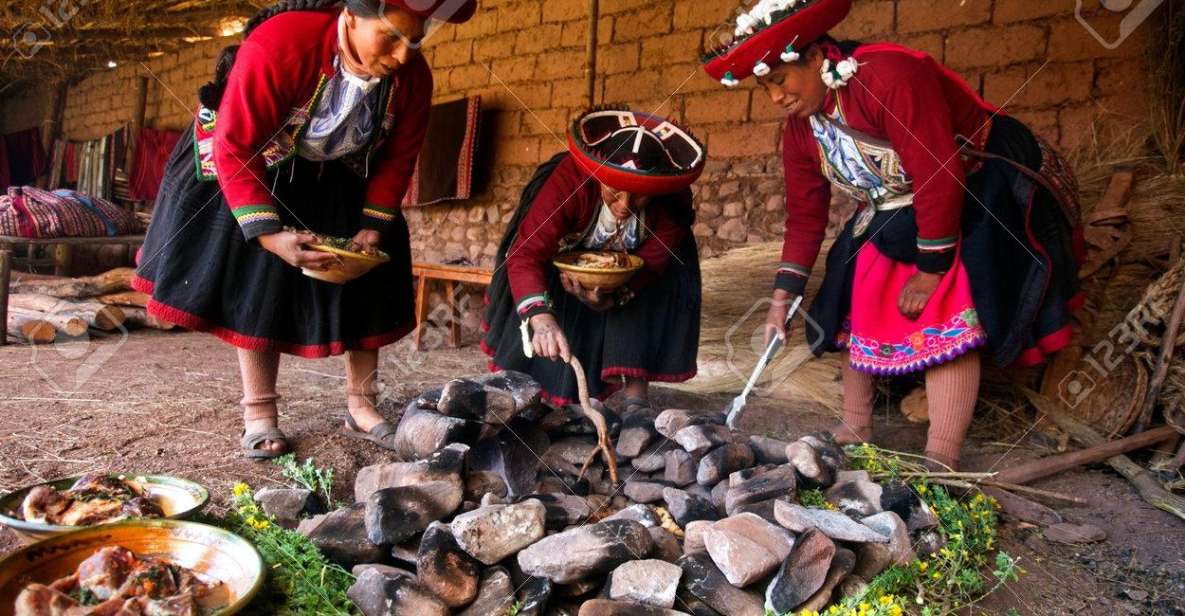
Community-based tourism in the Sacred Valley offers travelers a unique chance to enjoy local traditions and connect with the rich cultural heritage of the area. This form of tourism isn’t just about sightseeing; it’s about engaging with the communities that call this breathtaking region home.
Visitors get to participate in hands-on activities like preparing the traditional Pachamanca meal, which brings them closer to the local way of life. Plus, they’ll learn about ancient agricultural practices and Andean textiles, all while being welcomed by the warm, vibrant community.
It’s a fantastic way to experience the Sacred Valley’s culture authentically, making memories that go beyond typical tourist experiences and fostering a deeper appreciation for the local customs and traditions.
Cultural Importance of Pachamanca
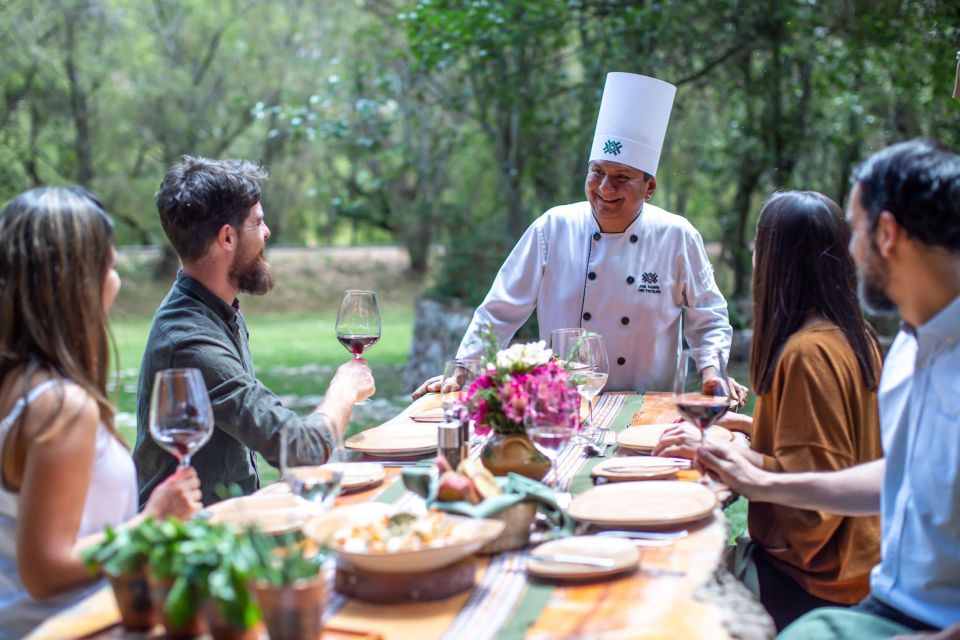
Pachamanca, an ancient cooking method that involves burying food in the earth, not only delights the palate but also symbolizes the deep connection between Andean people and their land.
This traditional practice showcases the rich cultural heritage of the Incas, emphasizing a communal approach to food preparation. Families and friends gather to celebrate life and nature, reinforcing bonds while honoring Pachamama, the earth goddess.
The method highlights local agricultural practices, using ingredients like meat, tubers, and herbs, showcasing the region’s bounty. By participating in a Pachamanca, visitors gain insight into Andean values, rituals, and the importance of sustainability.
It’s more than a meal; it’s a vibrant expression of identity, history, and respect for the environment.
Detailed Itinerary of Activities
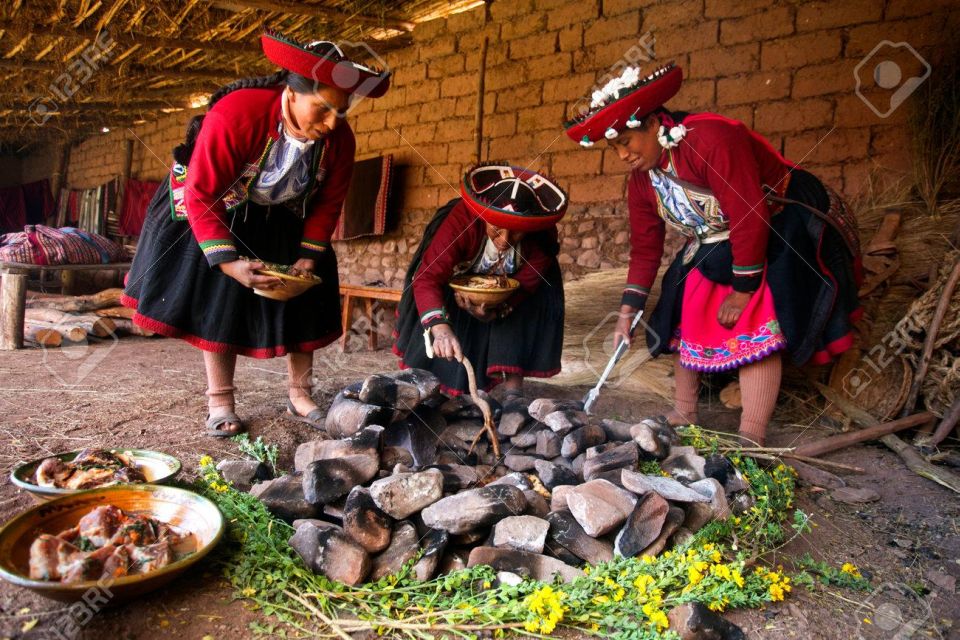
Visitors can expect an immersive experience filled with engaging activities that highlight the rich traditions of the Sacred Valley and its people. The day kicks off with a warm reception featuring local music, setting the vibe for a memorable adventure.
Soon after, guests dive into the history of agricultural tools used by the community. They get hands-on with Pachamanca preparation, cooking a delicious mix of meat, tubers, and cheese in an ancient style.
Next, they’ll marvel at stunning Andean textiles, witnessing the intricate processes of shearing and weaving.
Transportation and Pickup Options
Getting to the heart of the Sacred Valley experience is a breeze, thanks to convenient pickup options right from the Plaza De Armas, Centro Histórico, or the Chinchero District.
Travelers don’t have to worry about navigating unfamiliar streets or public transport; the setup ensures a smooth start to their adventure.
Once picked up, they can relax and soak in the stunning scenery while heading to the community where the Pachamanca experience unfolds.
The knowledgeable local drivers make it easy to feel connected to the culture from the get-go, setting the tone for a memorable day.
With personalized attention and convenient logistics, participants can focus on enjoying their unique journey through this beautiful part of Peru.
Inclusions of the Experience
Participants can look forward to a well-rounded experience that includes everything from hotel pickup in Cusco to a delicious Pachamanca lunch, ensuring a seamless and enjoyable day in the Sacred Valley.
They’ll kick things off with a warm welcome drink, either Mate de muña or coca tea, setting the tone for an authentic cultural journey.
With a local interpreter fluent in Quechua and Spanish, participants dive into the rich traditions of the community.
They’ll get hands-on with Pachamanca preparation, helping to cook a feast of meat and tubers. Not to mention, they’ll enjoy a captivating demonstration of Andean textiles.
Personalized attention and all the necessary tools are included, making this experience both immersive and unforgettable.
Exclusions From the Tour
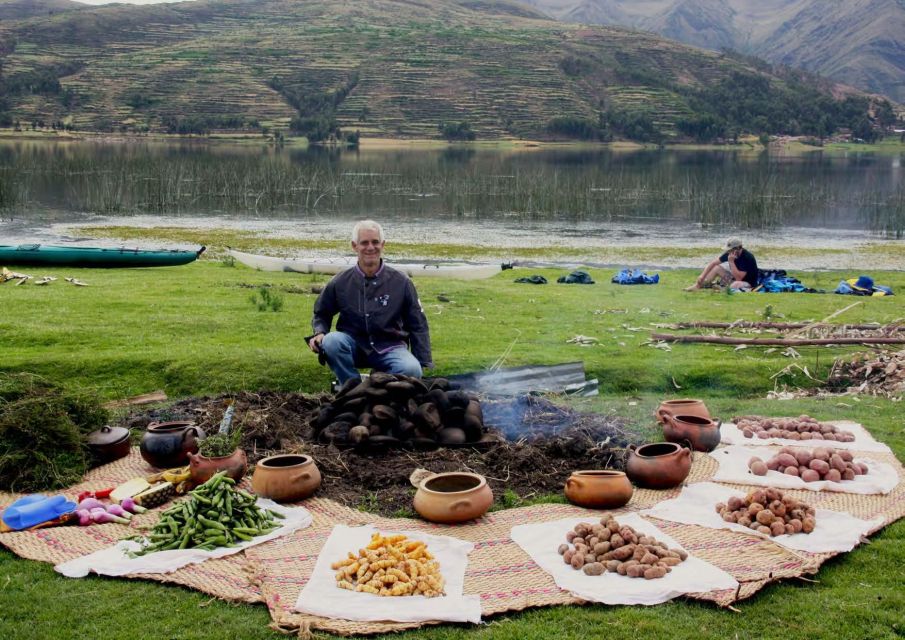
While the experience offers a lot, there are a few exclusions to keep in mind, such as alcoholic beverages, medical insurance, and tips.
It’s important for travelers to plan accordingly and understand what’s not included in their adventure. Here’s a quick rundown of what to expect:
-
Alcoholic Beverages: Guests will have to bring their own drinks if they want something stronger than the welcome tea.
-
Medical Insurance: It’s wise to have your own coverage since the tour doesn’t provide any.
-
Tips: A little gratitude goes a long way, so be prepared to tip your guides if you enjoyed the experience.
Guidelines for Participants
To make the most of the Sacred Valley experience, travelers should come prepared and aware of a few important guidelines.
First off, it’s best to arrive with an open mind and a curiosity for local culture—this isn’t just another tourist trap! Participants should also bring cash for any extras, like tips or snacks.
Remember, they’ll need biodegradable sunscreen to protect the stunning environment. Also, since this experience isn’t suitable for pregnant women or those with mobility issues, it’s wise to check in with everyone before booking.
Lastly, waiting in the hotel lobby ten minutes before pickup ensures a smooth start to the adventure.
Embrace the journey, and learn about the beauty of Pachamanca and the Sacred Valley!
Preparing for Your Visit
Getting ready for an unforgettable experience in the Sacred Valley means packing a few essentials that will enhance the adventure and show respect for the local culture.
Visitors should consider bringing these items:
-
Biodegradable Sunscreen: Protect the skin while keeping the environment safe.
-
Cash: Handy for local markets or tips, as card payments aren’t always accepted.
-
A Sense of Adventure: Be open to trying new foods and participating in local traditions!
With these essentials in tow, travelers can fully enjoy the rich heritage of the region.
The Sacred Valley’s vibrant community and traditions await, and being prepared ensures a smooth, enjoyable experience that honors the customs of the locals.
Here's a few more nearby tours and experiences we think you'll like.
- Ausangate Tour 7 Lagoons With Hot Springs Pacchanta
- From Cusco: Inca Trail 2 Days 1 Night – Private Tour
- From Cusco to Machu Picchu 2 Days 1 Night With 3 Star Hotel
- Cusco: 6-Day Andean Jewels Experience
- Cusco: Cusco City, Sacred Valley & Machu Picchu 4-Day Tour
- From Cusco: Machu Picchu Fantastic 7d/6n + Hotel ****
Frequently Asked Questions
What Is the Best Time of Year to Visit the Sacred Valley?
The best time to visit the Sacred Valley is during the dry season, from May to September. The weather’s pleasant, and stunning views abound—perfect for exploring the rich culture and breathtaking landscapes.
Are Vegetarian or Vegan Options Available for the Pachamanca Meal?
Though the traditional Pachamanca focuses on meat, visitors can often request vegetarian or vegan options. The hosts are usually flexible, ensuring everyone enjoys a delicious meal that respects dietary preferences. Just ask ahead!
How Physically Demanding Is the Pachamanca Preparation Activity?
The Pachamanca preparation’s not overly demanding; it involves teamwork and some digging, but it’s more about enjoying the process together. Participants get to connect with nature and each other, making it a fun experience.
Can I Join the Tour if I Have Food Allergies?
He can join the tour, but he should inform the organizers about his food allergies beforehand. They’ll make necessary adjustments to ensure he enjoys the experience without any worries about what he’s eating.
Are There Any Age Restrictions for Participating in the Activities?
He realized there are age restrictions for activities. Unfortunately, participants must be at least 18 years old. It’s a bummer, but safety’s a priority, ensuring everyone enjoys the experience without any concerns.
Not for you? Here's more of our most recent tour reviews happening neaby
- Sacred Valley VIP Private Tour
- Rainbow Mountain / Rainbow Mountain
- Machu Picchu and Huayna Picchu Excursion 2 Days
- Palccoyo Rainbow Mountain Tour in a Group
- Rainbow Mountain Tour Includes Buffet Lunch
- Cusco ATV (Quad Bikes) and Zipline Full Day Tour
- 5-Day Salkantay Trek to Machupicchu With Optional Hot Spring Bath
- Machu Picchu 2-Day Tour
- 06 Days 05 Nights Cusco Machupicchu and Rainbow Mountain Package
- Private Sacred Valley & Machu Picchu With Vistadome Train
- Salt Mines at Maras and Hiking to Tours of Sacred Valley
- 2-Day Sacred Valley and Machu Picchu Tour By Train
- Sacred Valley Tour From Either Urubamba or Ollantaytambo
- 4-Day Inca Trail With Transfers From Cusco
- Tour to Laguna Humantay 1 Day
Recap
Community-based tourism in the Sacred Valley isn’t just about sightseeing; it’s about diving into a vibrant culture and savoring the rich flavors of Pachamanca.
This hands-on experience connects travelers with local traditions and fosters genuine relationships within the community.
As visitors learn about ancient cooking methods and agricultural practices, they leave with a deeper appreciation for the Sacred Valley’s heritage.
So, if you’re ready for an unforgettable adventure, pack your bags and get ready to embrace the warmth of this enchanting region!
